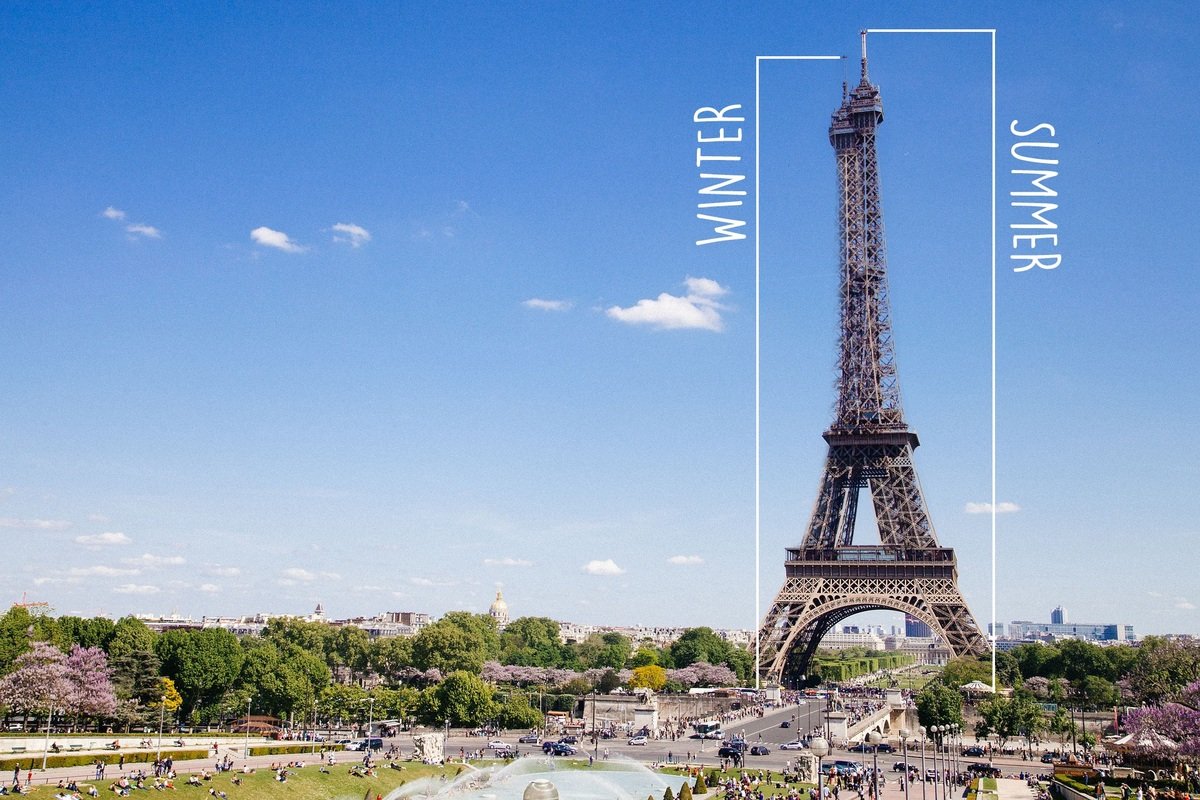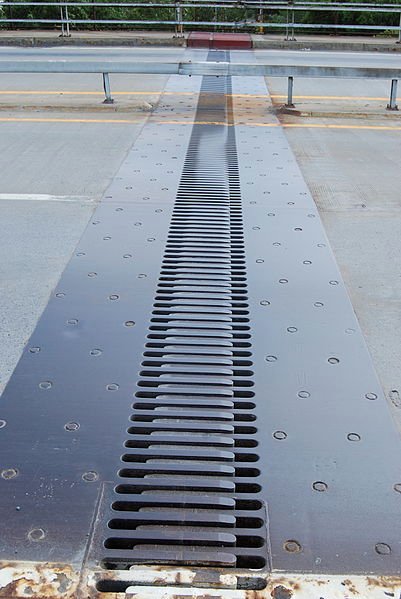
Paris, what a beautiful city! Almost everyone knows the famous Eiffel Tower: the cultural icon of France. It is an iron tower in Champ de Mars, Paris and you can visit the observation platform on the top of the tower. People who suffer from fear of heights should avoid to get on top of the tower because it is a bit wobbly there. But if you can make it, you are rewarded with an amazing view over the city. The best thing is: during summer, you are even higher than in winter. During summer the Eiffel Tower is approximately 15 to 30 centimeters higher.

Fig.1 Eiffel Tower in Paris. Note that the proportions are not correct. Source
Myth or Fact? We will find out!
Until 1930 the Eiffel Tower was the tallest building on earth. Named after its founder Gustave Eiffel it's purpose was to set a sign for the French Revolution and to operate as a radio transmission tower. From the bottom to the highest point the tower measures 324,82m and has a weight of around 7300 tons of wrought iron. Today’s article is not about the Eiffel Tower itself, it's more about a physical phenomenon: Thermal expansion.
What is thermal expansion?
Imagine you have a rod. This rod can be made of metal, plastic or wood. The length of your rod changes proportional to the environmental temperature. We know that fluids expand in their volume when they are heated. In the last article about hot water freezing faster than cold water we learned about the term convection. A warmer fluid usually has a lower density than a cold fluid. The difference in density causes the fluid to move. Solid materials can expand as well. It is even possible to calculate the expansion with the following equation:

Fig.2 Thermal expansion equation Source
With l the length, A the area, V the volume, a (alpha) the thermal expansion coefficient and T the temperature. Notice that the “triangle” in front of T stands for delta and means the temperature difference. Iron has a thermal expansion coefficient of 11,8 10^-6 K^-1.
Let’s take a rod that is 1000 mm long and a temperature difference of 10 Celsius.
This would make an expansion of 0.118 mm!
Now comes the Eiffel Tower. Let’s assume we have 0 degree in winter and 30 degree in summer, this makes a difference of 30 degree. With a length of 324m we have a difference of around 16,5 cm! Huge isn’t it?

Fig.3 Sample of a theoretical expansion of a rod Source
Not only towers but bridges can expand in their length too. Here is the use of expansion joints essentials. These little gaps allows brides to expand in summer without destroying the material due to the acting force. Without these expansion joints bridges might get seriously damaged over time.

Fig.4 Expansion joints Source

Yes, it’s true. During summer the Eiffel Tower can be taller than in winter.
I hope you enjoyed this episode of Myth or Fact and thanks for reading. The next one will follow tomorrow.
-Tim
